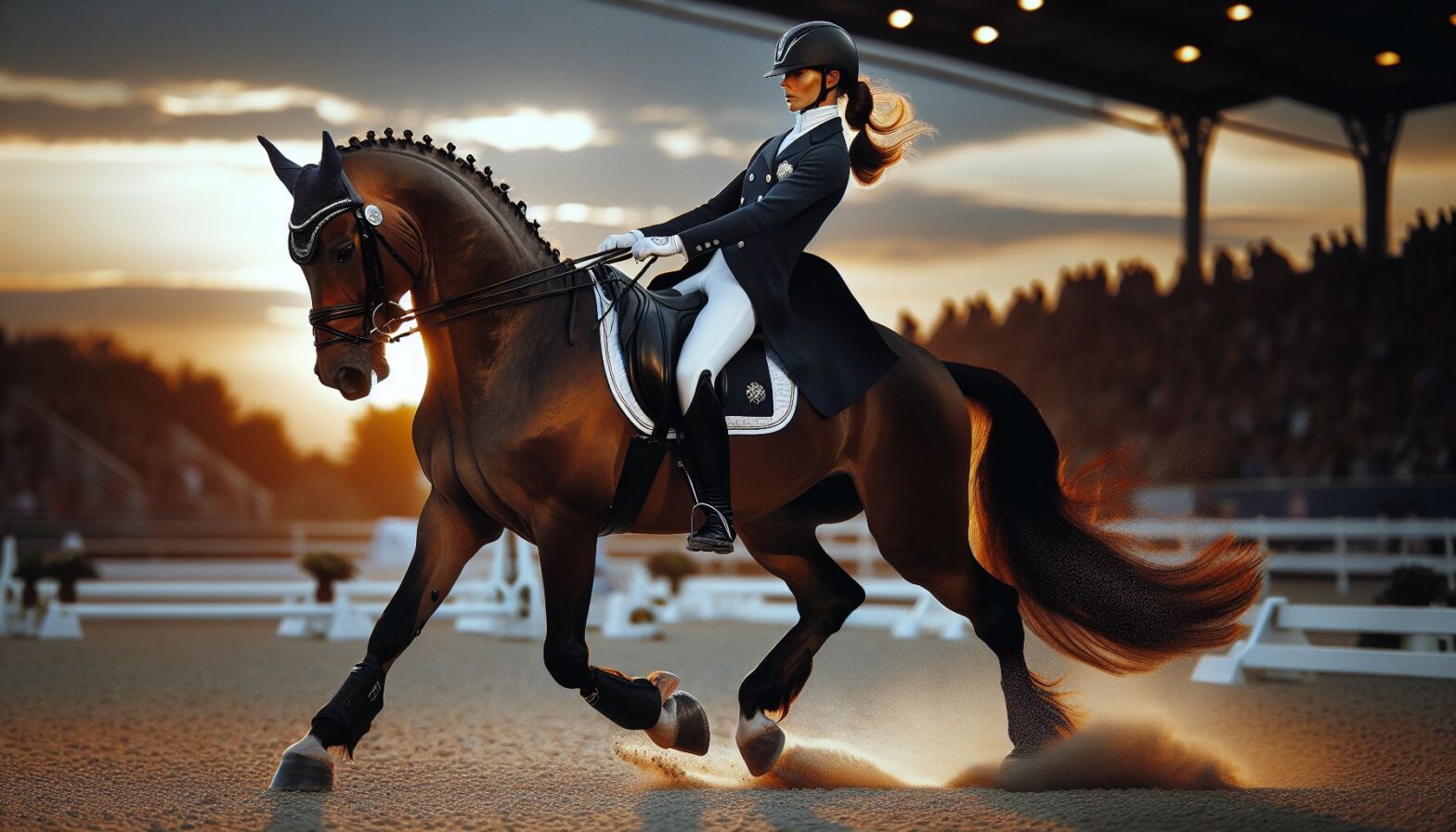Have you ever watched a horse and rider gracefully dancing in perfect harmony? That, my friends, is the beauty of dressage. It’s like watching a ballet performance, only with horses instead of ballerinas. But what exactly is dressage, and why is it such a captivating equestrian sport? Let me break it down for you.
What is Dressage?
At its core, dressage is a competitive equestrian discipline where horse and rider perform a series of predetermined movements with precision and grace. These movements, known as “tests,” are scored by a panel of judges based on the horse’s obedience, suppleness, and willingness to perform. Dressage is often referred to as “horse ballet,” and for good reason. The level of connection and communication between horse and rider is truly mesmerizing to watch.
The History of Dressage
Believe it or not, dressage has been around for centuries. Its roots can be traced back to ancient Greece, where cavalry soldiers used dressage techniques to train their warhorses. Over time, dressage evolved into a sophisticated art form, with its modern roots found in 17th-century Europe. Today, dressage is practiced all over the world, from humble riding schools to the prestigious Olympic Games.
How to Get Started
If you’re interested in getting into dressage, the first step is finding a reputable instructor who specializes in the discipline. They will be able to guide you through the basics of dressage, from learning how to sit correctly in the saddle to mastering the intricate movements required in a dressage test. It’s important to start with a well-trained horse who is capable of performing the movements required for dressage. Once you have the basics down, you can start training for competitions and working your way up the levels of dressage.
The Levels of Dressage
Dressage is divided into levels, with each level increasing in difficulty and complexity. The levels start at Introductory, where basic movements like circles and transitions are performed, and progress all the way up to Grand Prix, which showcases the highest level of dressage skill. Each level has its own set of movements and tests that horse and rider must master before moving on to the next level. It takes years of practice and dedication to reach the highest levels of dressage, but the journey is well worth it.
The Benefits of Dressage
Aside from the sheer beauty of watching a well-executed dressage test, there are many benefits to practicing dressage. For starters, it’s a great form of exercise for both horse and rider. The intricate movements required in dressage help improve the horse’s flexibility, strength, and balance, while the rider’s core strength and coordination are put to the test. Dressage also helps improve the communication between horse and rider, creating a stronger bond and partnership.
Final Thoughts
Dressage is more than just a sport – it’s an art form. The level of skill and precision required to excel in dressage is truly impressive, and the connection between horse and rider is unlike anything else. So next time you see a dressage competition, take a moment to appreciate the beauty and grace of the horses and riders performing. Who knows, you might just find yourself wanting to give dressage a try yourself. After all, there’s nothing quite like the feeling of riding in style.
